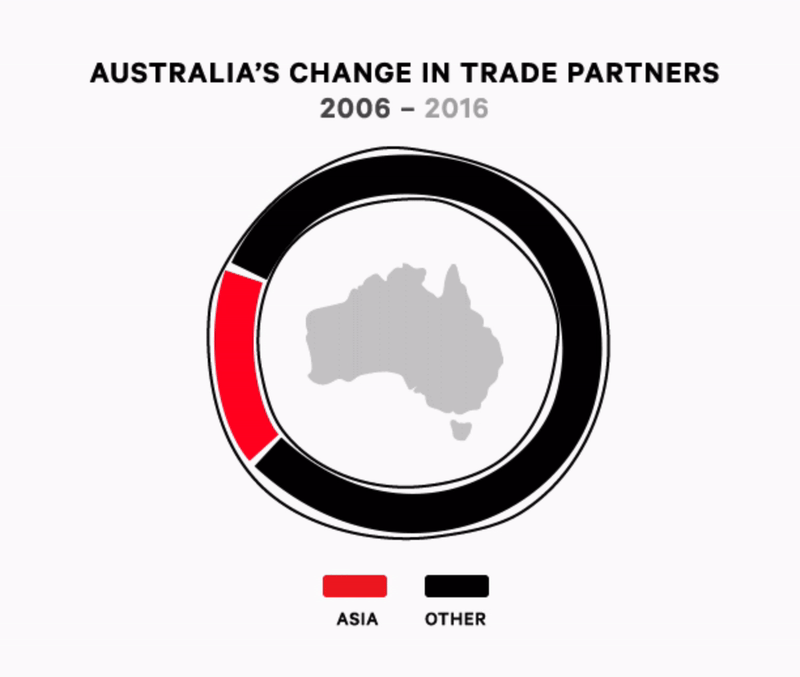Branding Insights for 2020
Looking back on the year that was in brand, highlights two transformations: the reshaping of trust and the impact of technology.
Trust issues leapt to the fore through the ongoing efforts to get to the bottom of actual behaviour versus projected image. From elections to royal commissions, from those in power to those who had theirs taken; the emperors were not just left naked, they were tarred and feathered. The decade of unforeseen Trumpian complications. What is clear in this new context of trust issues is that all organisations need to step beyond the brochure and slogan and demonstrate their true intentions.
As often pointed out, technology now shapes every single thing we experience from how we handle the mundane chores of life to how we consume peak experiences. There is nothing the democratisation of connectivity has not altered – from democracy to the purchase of a dime bag.
Trends in trust and technology have transformed us and in many ways they are flywheels of one another. Technology makes us less trusting; lack of trust makes us more reliant on technology. To misquote Dan Carlin, history never repeats but you can always hear its footsteps.
But what about the year ahead? In 2020 and the years beyond there will be three broad themes that will play out in boardrooms across our country.
Going for growth next door
The decade just gone saw efficiency and scale as the institutional answer to the increased pressure to perform. Australia is now part of the world as never before and we responded through bigger government departments to focus business on scaling core competency. This work is largely done. How do we get bigger and/or more focused is being replaced by how we get closer and/or more integrated in the lives of our customer to grow. This is driving the return of growth orientated CEOs. Beyond population growth as an economic stimulant the Australian economy has been in negative growth for nearly two years. That is the sobering news. The encouraging headline though is that Australian businesses are mostly now ready to compete on the world stage. The decade ahead will see Australia become further and further integrated within Asia.
Aussies leading the way
BHP: Now the world’s biggest, most technologically advanced and efficient miner.
Macquarie Bank: Its international advisory and businesses now account for two-thirds of its 3 billion dollar profit.
Smiggle: Great brand concepts have no geographic boundaries. Smiggle makes the move from retailer to wholesaler of an iconic brand. Eight countries and counting. Read more
The end of disruption advantage
The nature of competition is once again starting to shift. Professor Scott Galloway of NYU Stern speaks extensively about the death of brands as a competitive advantage arguing that they are a construct of a manufacturing to distribution economy or in his words the ‘advertising industrial’ complex. Brands were designed to guide consumer choice and enable the charging of a premium. The search for emotional differentiation rather than a solely functional or experiential basis begins again. All the classic signs are there. Lack of ability to get to a monopoly, plus lack of defensible moats plus increased regulation pressure equals Uber seeking differentiation through safety or Amazon through friendliness.
Aussies leading the way
Zip and Afterpay: As a leader in Fintech Australian companies are going head to head with legacy players Visa and Mastercard. Why pay interest on what you need now?
Catch: Wesfarmers building Catch to go head to head with Amazon based on the emotive promise of certainty and the logistical advantage of physical locations through Target and Kmart.
Canva: Profitable, scaled, differentiated brand based on self-expression a real unicorn worth 3.6 billion. Read more
Loyalty through membership
The best brands today focus on your loyalty and in turn your recurring revenue. As anyone not an ostrich knows the cost of acquisition is the new number when it comes to measuring brand salience. How much does it cost to gain their first purchase or from first base to home base in any good brand marketing funnel is all that matters. In a world of infinite consumer choice it’s important to get customers and keep them in a recurring relationship. Why? The biggest predictor of behaviour is not what you say but what you do. Having your unique purchase data much more likely leads to having your future purchase behaviour. Much like your significant other knows what you are likely to do so do your most intimate partners in your consumer life. Costco might know what size dog I have but Amazon knows its breed.
Aussies leading the way
Stan: Homemade content plus picking the best of Showcase has built a surprising streaming success story.
Qantas FF: Using data to sell more products beyond flights from upgrades to lounge passes to cheaper health insurance.
Powerpass: Bunnings pushing hard into knowing what you buy, utility of speed and price discounting for your data. Read more
Be better to each other.



